(Click for full-size picture)
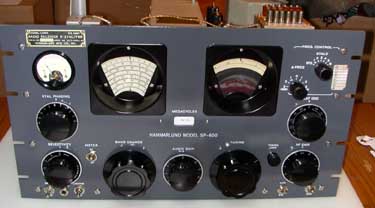
|
This is an SP-600-JX14, serial number 9396,
Signal Corps R-274C/FRR, order no. 3376-Phila-52 (1952, that is).
I personally feel that the JX-14 is the best of the SP-600 series (this is a
subject of debate, I know). It has a clean AGC system where they don't try to
feed the AGC voltage to the second mixer, and the RF stage get the full attenuation
of the AGC. I feel this AGC architecture helps keep the IM down in the two RF
amplifiers.
I replaced all but a few of the tubes with NOS. I put a 6BZ6 in the 1st RF slot
to increase the sensitivity. The tuning dials and the band selector readout
were in good shape, so I didn't change them. The band select readout, however,
was flaking off, so I did apply an overlay there.
I had
to replaced the AF potentiometer - the old one was scratchy.
I also replaced one of the front panel switches
|
(Click for full-size picture)
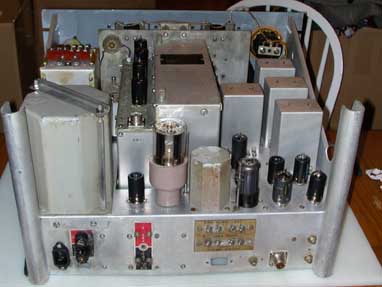
|
I did wash and scrub the sheet metal with a scrubby sponge. No steel
wool was used in the process. For the rust stains, I used a stainless-steel bristle
brush about the size of a large toothbrush. I replaced the RF connectors for the IF
output and antenna input with new silver-plated connectors.
|
(Click for full-size picture)
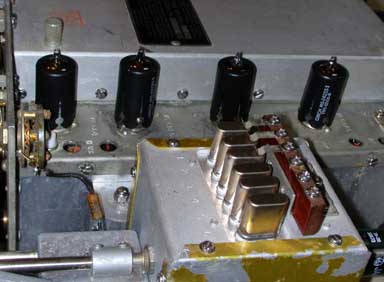
|
This is where I spent most of my time. The RF deck is the heart of the receiver. It has about
30 capacitors inside it. I replaced all of them, plus replaced the odd out-of-spec resistor and
a few suspicious-looking wires. Although I don't try to include crystals with the receiver, I
did test the FCU to make sure it works properly on all 6 slots. I replaced the RF connector with
a new silver-plated one. I actually took this picture right after aligning the receiver, so the
hole caps over the alignment access holes were not in place.
|
(Click for full-size picture)
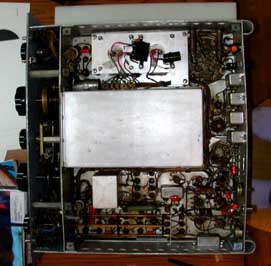
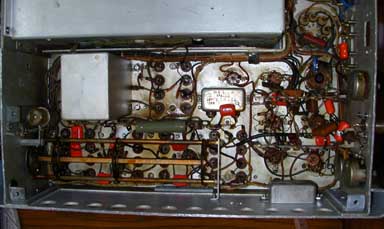
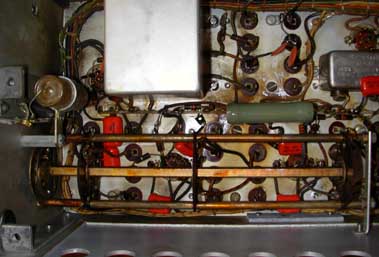
|
All the bypass capacitors in the IF and AF sections were replaced with the SBE 716P "orange-drop"
capacitors. High frequency sections got ceramic capacitors with 500V ratings. I routinely use
2% silver solder on all joints. I went through and reflowed many of the solder joints (but not
all of them). I did test each and every resistor in the unit. A few of the mica capacitors were
leaking, and were replaced.
|
(Click for full-size picture)
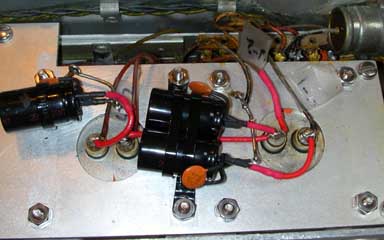
|
This is the rebuilt power section. I replaced the electrolytic with
47-uf, 450-V special high-ripple tolerant, long-life, electrolytics. You should
be able to pass this one down to your grand-children.
|
(Click for full-size picture)
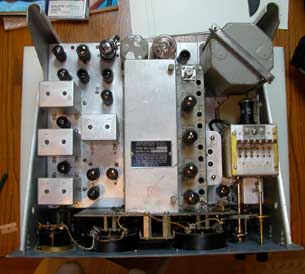
|
De-Oxit was applied to all the tube sockets. The chassis did not need any major work
- it was relatively straight and square. It was apparent that this receiver had
not been dropped or otherwise mishandled. There were no bent edges or crushed
corners. I replaced the missing tube hold-down clip on V17.
All the miniature tubes have the IERC heat-sheding shields or their Cinch
equivalents. These are the only tube shields known to actually increase tube
life.
|







